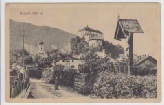

Wayside Shrines

4193 E. Ore Branch Road, Bloomfield, IN 47424; (812) 384-3813
Wayside shrines have been an European tradition for centuries and are still found today along the streets and roads of Europe. Small chapels and monuments were the norm for the underground Church as the faithful were unable to express their beliefs by constructing churches. Even where St. Peter was martyred in Rome, there was first just a small monument with hidden Christian symbols to let the faithful know the location while remaining concealed to the Romans. After the legalization of Christianity by the Roman Emperor, Constantine, in the 4th century, great emphasis was placed on the building of churches. As many beautiful churches were built, the faithful carried on the tradition of erecting smaller chapels and monuments closer to and inside of their homes. As Christian tradition developed, great places of pilgrimage were established. Pilgrims would often travel great distances to visit the holy places. The major routes of pilgrimage were dotted with smaller churches, chapels, roadside memorials and wayside shrines. These chapels and wayside shrines were erected by local people and offered places of rest and prayer for the pilgrim traveler on their hard and long journey. What started as a simple wayside shrine often became a chapel or even a church community. Today throughout rural Catholic Europe, wayside shrines can be seen. These shrines are still being erected and older ones attentively cared for. Often the shrines have votive candles placed before them. Even in nearby former eastern block countries, the shrines were erected and cared for even at great risk. The Stations of the Cross have a deep rooted history in the Church. Many believe that


A BIT OF HISTORY OF WAYSIDE SHRINES






various forms of the Way of the Cross date back to the very beginning of the Church. It has been said by pious tradition that the devotion was said in its early form by our Blessed Mother while she lived and was protected by the beloved Apostle John. Many saints have had a devotion to the Stations. The devotion is richly blessed and supported by the Church. Under certain conditions, plenary indulgences are attached to the devotion.










